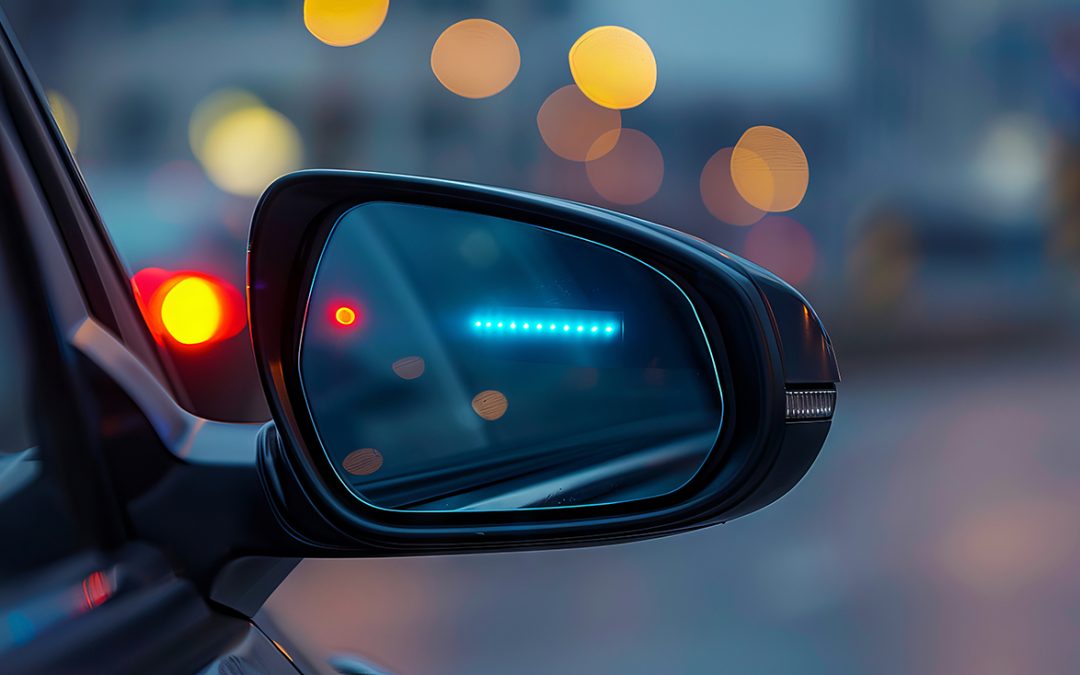Critical Considerations When Driving Near Motorcycles
Blind spot monitors are designed to help drivers detect vehicles behind or beside them that may otherwise go unnoticed. These systems light up when a vehicle is detected in the blind spot and sound an alert if the driver attempts a potentially dangerous lane change or merge.
However, these systems aren’t foolproof. When they malfunction or don’t work as expected, the risk of an accident rises, especially because many drivers have grown reliant on them. This reliance can lead to drivers neglecting the manual checks of their surroundings.
How Do Blind Spot Monitors Work?
Blind spot monitors generally use two main components: sensors and indicators. The sensors detect the environment around your vehicle through cameras, radar, or ultrasonic sensors. The indicators then notify the driver using lights and sounds, sometimes even showing a visual representation of the danger.
In vehicles equipped with a center display, blind spot monitors can project a real-time visual of the surrounding area, helping drivers keep their focus on the road. Some advanced systems offer features like Automatic Emergency Steering (AES), which vibrates the steering wheel, and Automatic Emergency Brakes (AEB), which can automatically engage the brakes to avoid a collision.
While these monitors have been shown to reduce the likelihood of lane-change accidents by 18% and injuries by 24%, flaws in the system still exist.
Where Are Blind Spot Monitors Located?
Typically, blind spot monitors are located near the vehicle’s rear bumper, but they may also be embedded in parking sensors, taillights, or within the quarter panels behind the bumper cover.
What Are the Limitations of Blind Spot Monitors?
Though these systems provide essential safety advantages, they have limitations. Some systems are less effective at lower speeds, which is concerning since low-speed accidents can still result in injuries and significant vehicle damage. Drivers need systems that are efficient at all speeds to enhance safety on the road.
Another flaw is the size and placement of the warning lights. In many cars, these small lights are positioned on the side-view mirrors and can be hard to spot, especially in bad weather or bright sunlight. However, some vehicles offer more prominent warning lights in better positions, such as on the side-mirror mount or windshield pillar, making it easier for drivers to react.
In certain models, an audible warning only activates when the driver uses their turn signal. The problem arises when drivers don’t use their signals, leaving them unaware of dangers unless they manually check their blind spots. Weather conditions such as snow, ice, or heavy rain can also obstruct the sensors, leading to inaccurate readings.
For motorcyclists, the situation is even more precarious. Due to their smaller size and unique movement patterns, motorcycles are harder for blind spot monitors to detect. If a motorcycle is close to the rear or side of a car, it may not appear on the monitor, putting both the driver and motorcyclist at risk.
Should You Rely Entirely on Blind Spot Monitors?
Although these systems are meant to assist drivers, they should not be solely relied upon. Driver awareness is always critical. Blind spot monitors are intended to support, not replace, safe driving practices. It’s still vital to check mirrors and manually inspect blind spots before making lane changes.
Can You Install Blind Spot Monitors on Your Own Vehicle?
If your vehicle lacks a factory-installed blind spot monitor, aftermarket options are available. While factory systems are typically more reliable, installing a monitor yourself can still enhance your safety. That said, it’s important to remember that no matter how advanced your technology, safe driving habits are essential.
If You’ve Been Injured, Contact The Law Offices of Norman Gershon
If you’ve been involved in a motor vehicle accident and sustained injuries, you may feel overwhelmed as medical bills accumulate and insurance companies offer settlements that fall far short of what you deserve.
At The Law Offices of Norman Gershon, we are here to protect your rights. With over 35 years of trial experience, our team will work to hold negligent parties accountable while you focus on your recovery. Let us take care of the legal complexities and help you obtain the compensation you are entitled to.
If you’ve been injured in White Plains, Yonkers, or anywhere in Westchester County, give us a call today to discuss your case. It could be the most important call you make.


Recent Comments